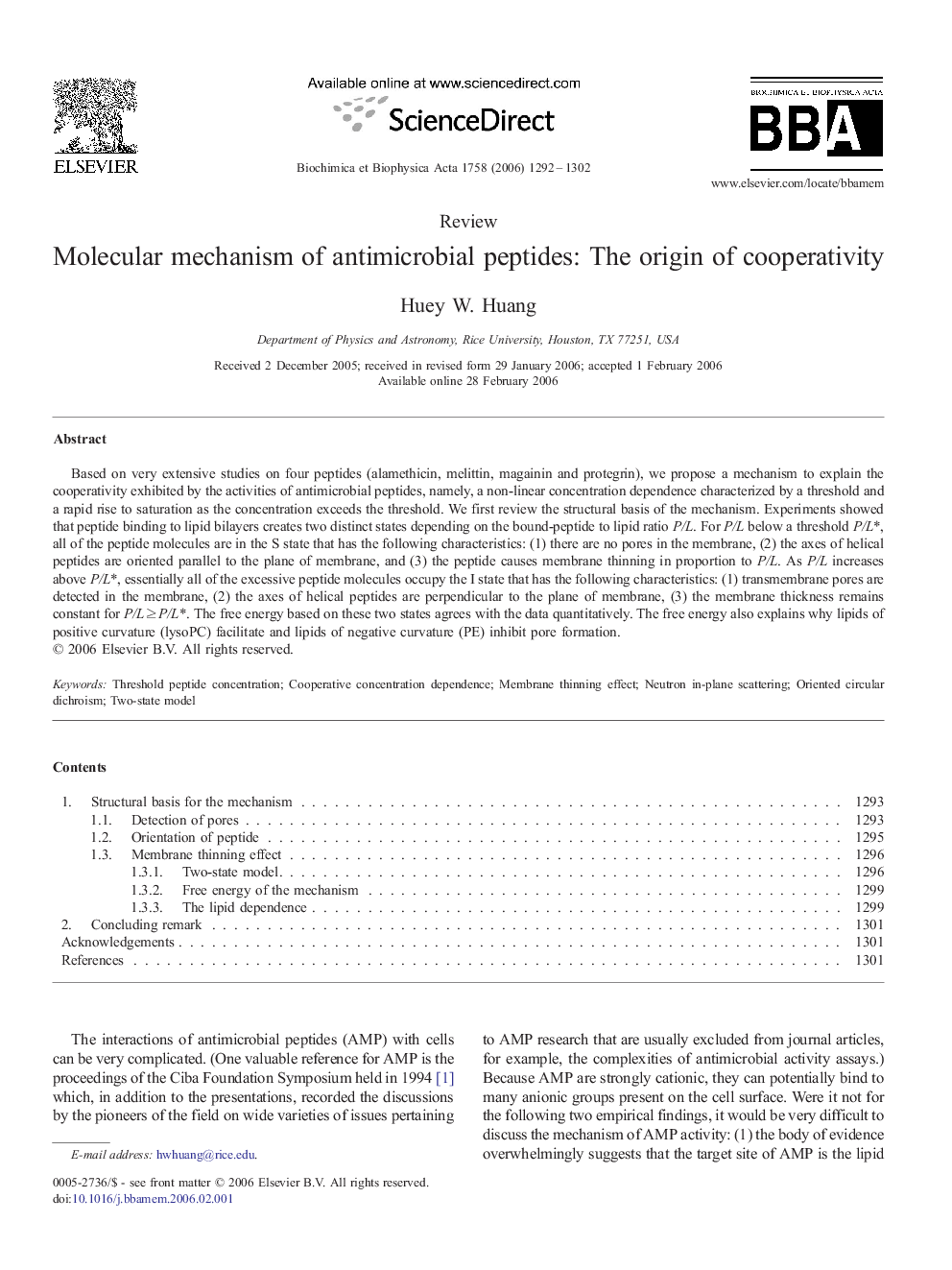| کد مقاله | کد نشریه | سال انتشار | مقاله انگلیسی | نسخه تمام متن |
|---|---|---|---|---|
| 1946020 | 1053284 | 2006 | 11 صفحه PDF | دانلود رایگان |

Based on very extensive studies on four peptides (alamethicin, melittin, magainin and protegrin), we propose a mechanism to explain the cooperativity exhibited by the activities of antimicrobial peptides, namely, a non-linear concentration dependence characterized by a threshold and a rapid rise to saturation as the concentration exceeds the threshold. We first review the structural basis of the mechanism. Experiments showed that peptide binding to lipid bilayers creates two distinct states depending on the bound-peptide to lipid ratio P/L. For P/L below a threshold P/L*, all of the peptide molecules are in the S state that has the following characteristics: (1) there are no pores in the membrane, (2) the axes of helical peptides are oriented parallel to the plane of membrane, and (3) the peptide causes membrane thinning in proportion to P/L. As P/L increases above P/L*, essentially all of the excessive peptide molecules occupy the I state that has the following characteristics: (1) transmembrane pores are detected in the membrane, (2) the axes of helical peptides are perpendicular to the plane of membrane, (3) the membrane thickness remains constant for P/L ≥ P/L*. The free energy based on these two states agrees with the data quantitatively. The free energy also explains why lipids of positive curvature (lysoPC) facilitate and lipids of negative curvature (PE) inhibit pore formation.
Journal: Biochimica et Biophysica Acta (BBA) - Biomembranes - Volume 1758, Issue 9, September 2006, Pages 1292–1302